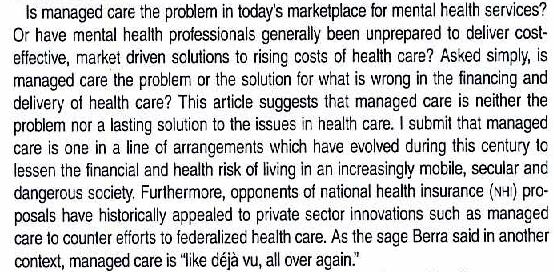Several new twin studies have been published over the past several months. A new one, just published on the Archives of Sexual Behavior website, deals with sexual orientation and neuroticism and psychoticism (more about that study in a future post). One of the co-authors of this new paper is J. Michael Bailey. Dr. Bailey is among the world’s top sexuality researchers and author of numerous publications involving twins and sexual orientation. Here he comments on the limitations of twin studies and sexual orientation change. This conversation was triggered in part by the recent NARTH report which stated that “homosexuality is not innate” without research supporting the statement.
In an email, I asked Michael to discuss how both the right and left misunderstand twin studies and their relationship to questions of innateness. His answers are indented and presented in full with some comments from me.
Both the left and the right conflate “genetic” with “inborn.” The debate over sexual orientation (and other traits) is more about inborn than genetic. As an example of the difference, it is common for identical twins to be discordant for homosexuality (i.e., given a gay identical twin, his twin is usually straight). It is a terrible mistake, though, to assume that this reflects the kind of social environment that can be manipulated. As you know, childhood gender nonconformity is very highly predictive of adult homosexual outcome. I’ve spoken to several mothers of identical twins discordant for
extreme childhood gender nonconformity (where one male twin wants to be a girl and the other is a typical boy). In each and every case, the mothers insist they did nothing–nothing–to differentiate the twins until well after the behavioral/emotional differences emerged. I
believe them.
On this point, some observers might not be quite as believing as Dr. Bailey. However, I lean in his direction on this, especially with extreme gender nonconformity. On this blog, we had an extensive conversation with a mother of twins, one quite non-conforming and the other not. In this context, it might be good to review those posts. (part 1, part 2). At the same time, I am aware of some parents who do indeed raise kids to prefer gender nonconformity. Extremes in childrearing may in some cases influence the trait of gender nonconformity in kids, but one does not need such parenting to get the same result.
The left often assumes some genetic influence means that social environment plays no role at the individual level. If some genetic factors operate for some, then they must operate for all. However, this cannot be assumed from twin studies. Neither can it be assumed that the differences between twins all relate to environmental factors which are alterable. On this point, Bailey says:
The main issue is nature-nurture. Heritability (which can be estimated from twin studies) generally is consistent with nature. But environmentality (the complement of heritability) DOES NOT MEAN nurture as it is typically assumed (i.e., social and reversible causation). MZ twins [monozygotic or identical] can differ (and I expect usually do) for biological reasons. At this point neither hypothesis (biological or social causation of MZ twin differences) has strong evidence to for it.
Note the last statement. We simply don’t know as yet. This is another reason why I think why I believe the NARTH paper is misleading. The paper uses weak therapy research to make a statement about innateness and immutability of sexual orientation. First we do not know whether twin differences occur for social or biological reasons. And then we do not know if any of the factors in any given case are alterable. Francis Collins made this same point when reacting to how Dean Byrd at NARTH quoted his book The Language of God:
The evidence we have at present strongly supports the proposition that there are hereditary factors in male homosexuality — the observation that an identical twin of a male homosexual has approximately a 20% likelihood of also being gay points to this conclusion, since that is 10 times the population incidence. But the fact that the answer is not 100% also suggests that other factors besides DNA must be involved. That certainly doesn’t imply, however, that those other undefined factors are inherently alterable.
The recent NARTH paper implies that studies demonstrating some shifts in sexual behavior disconfirm the view that homosexuality is innate. As Bailey notes above, we do not know. However, Bailey indicates a situation which provides a problem for environmental hypotheses.
Studies of the rare conditions of penile ablation and cloacal exstrophy (in which hormonally normal males are reassigned and reared as females from a very early age) show that such males grow up to be attracted to females, as per their biological, but not their social sex. To repeat something I’ve said many many times (and have never had a good answer), if you can’t make a male attracted to other males by cutting off his penis and rearing him as a female, how likely is any social hypothesis?
Bailey adds a bit of a challenge to his comments:
The folks who insist that (male) sexual orientation can be changed should put their money where their mouths are and fund you and me (and the researcher of their choice) to do a study with objective (i.e., penile and neural) pre-post measures.
We have discussed a study like this since 2006. I am aware of people who would participate but funding is an issue. Bailey and I both have sought such funding but no one has provided encouragement.
Anyone interested?
I will have more on the NARTH paper in future posts. Thanks to Michael for his comments and expertise.
